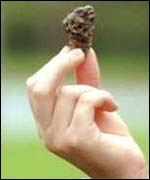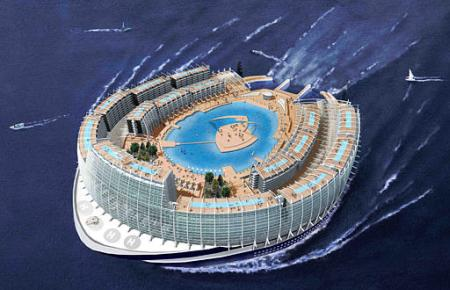Deadly 100ft Rogue Waves Destroy World's Giant Ships -Scientists Baffled By Giant Walls Of Water
The Observer - UK
11-11-2
They are the stuff of legend and maritime myth: giant waves, taller than tower-blocks, that rise out of calm seas and destroy everything in their paths.
For years scientists and marine experts have dismissed such stories as superstition. Walls of water do not rise out of the blue, they said. But now research has revealed that 'killer waves' do exist and regularly devastate ships around the world. They defy all scientific understanding and no craft is capable of withstanding their impact.
'Rogue waves in the past have been ignored and regarded as rare events,' said Jim Gunson, the Met Office's expert on ocean waves. 'Now we are finally getting a handle on them and finding out how common they are.'
These mammoth events are not tidal waves or tsunamis, however. Nor are they caused by earthquakes or landslides. They are single, massive walls of water that rise up - for no known reason - and destroy dozens of ships and oil rigs every year.
The story of the super-tanker M¸nchen is a classic example. She was one of the biggest ships ever built - the length of two-and-a-half football pitches - and unsinkable, it was claimed.
But on 7 December, 1978, the pride of the German merchant navy, en route to America, disappeared off the face of the earth. Despite the biggest search in the history of shipping, all that was found of the M¸nchen and her 26 crew was a lifeboat that had suffered an incredible battering.
'Something extraordinary' had destroyed the ship, concluded an official inquiry, which dismissed the Munchen's sinking as a highly unusual event that had no implications for other forms of shipping.
Now scientists believe this calm assurance may be dangerously misguided. The destruction of the Munchen was anything but uncommon, as a BBC2 edition of Horizon, Freak Waves, will point out on Thursday.
'Ships are going down all the time,' said MP Eddie O'Hara, chairman of the parliamentary committee on maritime safety. 'If you read the maritime press there is a boat going down at least once a month, with the loss of crew usually measured in dozens of lives.'
In the past, bad maintenance or poor seamanship were blamed. Now scientists suspect the truth may be far more bizarre.
It is now known that the Queen Mary was hit by a 75ft wall of water while carrying 15,000 troops in December 1942. 'The ship came within an ace of capsizing, but it was all hushed up at the time,' O'Hara told The Observer.
And only two years ago the British superliner Oriana was struck by a 70ft wave that smashed windows and sent water cascading through the ship, swamping six of its 10 decks. A month later eight men were killed when a freak wave struck the Anorient trawler 87 miles west of Loop Head in Co Clare, and two Britons taking part in the world's toughest yacht race last March were seriously injured after a 50ft wave swept over their vessel 70 miles off the Australian coast.
These giant waves cannot be predicted by standard meteorology. Waves - even in the worst of storms - should not reach much more than 40ft. The fact that walls of water up to 100ft are being observed regularly suggests that something is worryingly wrong with meteorology theory.
Waves are normally caused by high winds whipping over the sea surface, but the origin of the freak waves baffles scientists. One theory suggests that waves and winds heading straight into powerful ocean currents may cause these huge walls of water to rise up out of the deep. Another suggests that, under certain conditions, waves can become unstable and start to suck in energy from neighbouring waves and so grow massively and rapidly.
Researchers are still arguing over these ideas, but what is indisputable is the fact that the design of modern ships is inadequate for dealing with the freak waves.
The point will be emphasised this week when O'Hara tables a Commons motion expressing concern over ship safety in freak weather. Hatches need redesigning, he says, while the resistance of windows to the impact of freak waves has to be considerably improved.
Massive improvements - that could cost merchant fleet owners billions of pounds - may have to be carried out on ships if they are to survive the freak waves. 'Ship design is simply not good enough,' said Douglas Faulkner, a Royal Navy ship designer and chairman of naval architecture at Glasgow University. 'Although you can never legislate for everything, you can make the best attempt possible to reduce the risk. The issue of unusual waves is something we really can't ignore.'
Emerging Threats of Biological Terrorism: Recent Developments
Co-Sponsored by The Terrorism Studies Program at The George Washington University
and
The Potomac Institute for Policy Studies
June 16, 1998
The Disaster Train
PROF. BRENNER: We'll now hear from Dr. Steven J. Hatfill. He's been connected
with the National Institutes for Health for some time, working on child health
development and the laboratory for cellular and molecular biophysics. He's
a medical doctor with certification in hematology and pathology. He has a
Ph.D. degree in molecular cell biology. He has a diploma in aviation medicine.
He has a diploma in diving and submarine medicine. He has served with the
U.S. Army Special Forces. He was on a 14-month duty as medical officer and
science team leader at the Antarctic research station. He also conducted
research while there for the NASA Johnson Space Center Solar System Exploration
Division. He's been involved in research involving serious problems such
as Lyme disease, Ebola and the Marburg virus. Dr. Hatfill.
[Slides cited were not in the original.]
DR. HATFILL: We've heard the threat today from Dr. Alibek, Dr. Patrick, and
Dr. Huggins for biological threats of biological terrorism. We've heard
conventional countermeasures. We've heard of a number of programs of advanced
countermeasures. It now becomes necessary to discuss worst-case scenarios
and that concerns ways of management, or possible ways of management, of
large areas covered by biological agent.
I've been working with Brigadier General [sic] Third Army Medical
Command in the United States Army Reserve to try to develop a system for
flexible and rapid transportation of mass casualties from a contaminated
area to a rear area while maintaining life support and critical care functions
for the casualties.
When we're dealing with a large area of coverage event, this can be exceedingly
complex. A single area of a city may be affected or multiple areas of the
city at the same time or closely thereafter, and terrorists may be involved
with both chemical weapon release as well as with the biological agent.
One of the most dramatic open source experiments that have been described
for a large area of coverage occurred on September 21, 1950, where a naval
vessel did an open air simulation test releasing spores of the same size
and weight as anthrax, but nonpathogenic to humans, over the city of San
Francisco. This was conducted off a naval vessel two miles offshore and the
results are illustrated in this diagram. Had this occurred with actual anthrax,
there's a possibility that several hundred thousand people could have contracted
a fatal pulmonary infection.
These types of dispersal scenarios in the most part are covert. There's no
indication that a biological agent release has occurred until the incubation
period for the particular disease has expired. This is a typical case history.
An emergency department, normal operations and patients begin to appear.
The terrorist event has occurred the week before. The incubation period for
the agent is now open and these previously healthy individuals start coming
in requiring rapid intensive care including mechanical life support, mechanical
ventilation.
The situation of a large area of release in many ways would resemble a modern
battlefield, disrupted lines of communication, poor coordination. Any changes
that were apparent in peacetime would tend to be amplified during their affect
during the natural biological agent pattern.
Consequently it is illustrative to look at how massive casualties have been
handled on the battlefield before. In the 1850s, we saw the first large-scale
systematic development of ways of transporting casualties from a high
concentration on the battlefield to a low concentration in rural areas. This
was during the Crimean War. The British Army instituted an eight-mile railway
line during this conflict. This was also the time when the Florence Nightingale
nurses came into effect in the first early field ambulances.
This concept became so effective that by the early 1900s during the Boer
War in South Africa, the British army had prepositioned a number of specialized
hospital trains all along the areas of fighting. Each of these passenger
cars has been converted to handle up to 25 stretcher cases, and these were
prepositioned along different areas of the conflict. Patients were brought
to these trains and taken to various treatment centers.
The concept was further developed and by the onset of World War I, was in
a highly effective manner. Patients could be taken directly from the trenches
in the battlefields moved by an organized ambulance system, and deposited
in what had now become hospital trains.
Some of these cars contain surgery units or supporting care to stop bleeding,
regain respiration, and resuscitate the patient. There were also provisions
for walking cases and for other casualties. The system was so effective that
during the four days of the battle of the Somme, there were 13,392 cases
that were transported from the front-line battlefields to rural hospital
areas in France.
Special frames were developed to cushion the patients as they rode on the
trains. This is one of the first hospital trains in operation.
By World War II, a number of trains were in operation both on the battlefront
and for cities, because of advances in air power, cities now became a target,
specifically London. Hospital trains were used to evacuate thousands of
casualties from London hospitals to outlying areas, in addition to receiving
casualties from across the channel and redistributing it within the country.
This is an interior of one of these trains. It's a three-tiered system to
provide adequate access to the patients for their transportation.
This was even continued up until the 1950s with the British Army of the Rhine.
This was the advent of federal medical transportation medication; the hospital
trains went into disuse. At this time there's only one in use in England
which is used by a reserve army medical unit.
With a biological attack, these patients are going to require even more intensive
care than trauma management. This is a slide of inhalational anthrax. We
only have a few hours once predominantly respiratory symptoms develop. The
patient needs to be intubated; they need to be mechanically ventilated. Their
blood pressure needs to be supported with medications.
Some cutaneous cases may appear. This is cutaneous anthrax, the vegetative
bacteria multiplying in the blood stream and the tissues release a number
of toxins, with a massive edema, malignant edema.
Over 50 percent of those exposed to the agent plume end up with inhalation
anthrax. Over 50 percent of the inhalation anthrax develop cases associated
with hemorrhagic meningitis. This is the membrane covering the brain. A great
deal of these patients will be brought in as casualties probably all having
epileptic fits. Surrounding area and surface contamination is possible as
well as intestinal cases may appear. This is hemorrhagic infection of the
lymph nodes and intestines and a small destruction section of the bowel through
disruption of his blood supply.
Until recently, the medical trains would not have been sufficient for the
mass evacuation of casualties from a high concentration attack area to rear
definitive area treatments. Recently, Northrop Grumman has come out with
a specialized stretcher. This is called LSTT stretcher. It stands for Life
Support and Trauma Transport. Essentially, this is a self-contained unit
with a giant ventilator I.V. fluid infusion pump and with full monitoring
capability. Patients put on the stretcher can be intubated, stabilized, and
transferred.
The second concept that's become important is that of intermodal transportation.
This is the use of containers of goods or contents by a variety of different
methods.
This can be by land, air, and sea in standardized containers. There's a whole
subsection of the container transport industry, and they will make containers
how you want. If you want a bathroom in it, they'll put a bathroom in it.
If you want it a certain size, they'll construct it a certain size, economically
and standardized. There are some methods for unaccompanied freight, and at
the bottom slide you can actually have these on lorries, semi-trailer trucks,
that are driven on and then off again.
By combining the systems, it becomes possible to design a disaster car, a
disaster evacuation train. The train would look something like this. Head
cars are the ones that stay with the containers. They transport the rest
of the train. This is a locomotive, a container for medical personnel. Bulk
stores, which could feature antibiotic stores or injectors with deployable
vaccination stations. And a staff and manned control communications and
intelligence sections.
The staff car could act as the nucleus of a command center to coordinate
effectively with first responders.
For a proper coordinated response, it's envisioned that the first responders,
the fire, police, and ambulances need to be connected with military resources,
with government and state resources, and with satellite.
Currently, a piece of technology called the alert system has been developed
by the Texas Department of Transportation. Essentially, this is a laptop
computer built into the trunk of a patrol car. It's digital and operating
on the mobile system. Already digital images have been transmitted from a
patrol car in Florida to a patrol car in Alexandria. This allows some
interoperatability between all first response vehicles.
By linking into the Internet, a commonality can be provided. A previous mass
casualty or possible mass casualty incident such as the World Trade Center
or Oklahoma City bombing shows that the cellular system tends to go down
right after an accident. Everybody's trying to log on and use it, and the
system collapses. The train would carry a useful piece of technology with
it. Manufactured by Celltel, this is a mobile system. Unless you have a chip
for your cell phone, you cannot talk.
This entire system provides a satellite link to other federal responders
in transit to the site as well as coordinating local first responders. This
will cover about a 60-mile radius.
Maps of each area can be used so all response forces are clearly in contact
with each other. You can play road status, you can put meteorological and
weather information on these maps and GPS coordinates are part of the alert
system.
Defense Special Weapons Agency have an enormous amount of experience modeling
downwind areas. They have computer programs that can model fairly quickly
possible downwind affected areas.
The second section of the train would be the intensive care patient cars.
The intensive care ward coaches would be specially built containers with
a shock absorbing system able to handle the LSTT stretchers. It can be mounted
on lorries or it can be driven on and off with a semi-attached tractor-trailer.
Patients would be brought from out of the WMD site on the LSTT stretchers.
They would then be loaded into these special containers. A center monitoring
station, this has already been designed, and one doctor and five or six orderlies
could effectively monitor 40 or 50 patients. These things can be driven off
or taken straight to the facility.
The last portion of the disaster train would consist of cutout cars. These
would be left on-site. It features a security element, another command control,
communications information element, ambulance trucks with the LSTT stretchers
already loaded that can drive into the site and bring the patients back to
the side of the train and a deployable field hospital.
The inside of these hospital cars can be made to different sizes. Along with
this comes a mortuary embalming station. This was originally developed by
Arms Corps in South Africa with the concept that patients are embalmed onsite.
This negates mass burials or graves. The remains are preserved. It can handle
800 bodies an hour. The bodies are embalmed, put into body bags, and stored
at room temperature for later burial when the incident is over.
The system would work like this: If these trains are placed -- and we'll
estimate you'll need somewhere around 27 trains to cover the United States
-- but if all other traffic is cleared off of the rails, you'll be no more
than four to six hours rail travel to a major metropolitan area.
Notification. We are estimating this will be the Reserves or the National
Guard handling these trains. The train would travel to the disaster site
to a predetermined spot. It will be loaded. Ambulances and a helipad will
be set up back on the train, and an on-site army field site hospital would
be deployed. The patients would be brought out on the LSTT stretchers and
then loaded onto the train. From there, the train would leave full.
This is an artist's conception of such an incident. This deploying field
hospital is covered with a charcoal and peroxide blanket. Patients are brought
out of the area by air or by ambulances on the train on the LSTT stretchers.
These can be at a positive pressure or negative pressure. We show the assistants
here in Level A gear because a chemical attack could have occurred at the
same time, and the patient is loaded onto the containers and we distribute
it out of the incident site.
The disaster train concept could provide a number of things. The ability
to rapidly transport large quantities of antibiotics, vaccines, personnel
and protective equipment to a WMD site within a matter of hours, the ability
to rapidly transform sitting stretcher and critical care patients on life
support from congested nonfunctional hospital areas to health care facilities
outside of the target area.
And this response capability would be independent of normal road transportation.
Some scenarios suggest that with a large area of coverage, one third of the
population may attempt to flee the city. This could mean both sides of the
beltway congested. Bringing these medical facilities in by train, that avoids
this traffic jam. The country could be at war at the same time. There could
be limited air assets. It provides, above all, a starting point to coordinate
other federal response forces. Thank you very much.

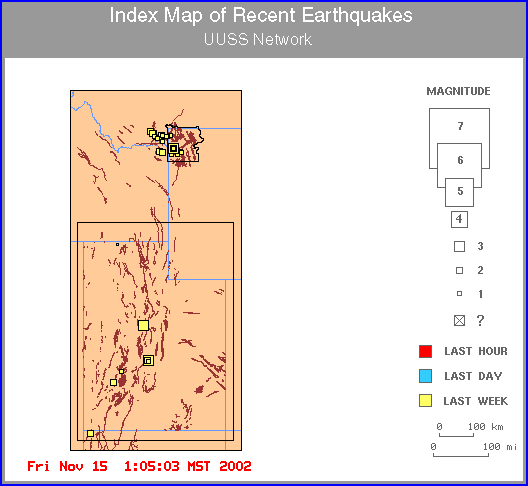



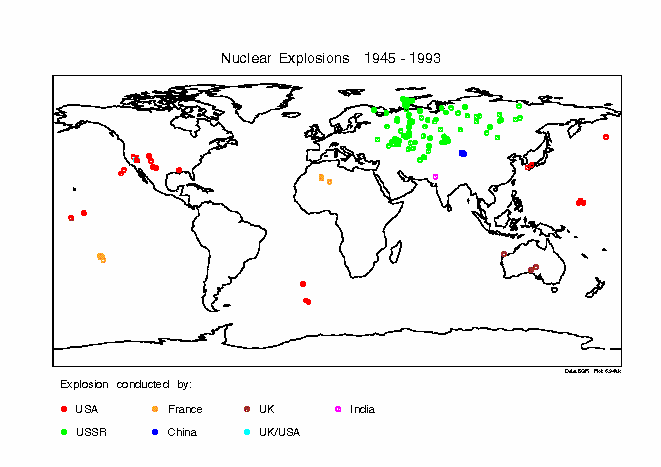

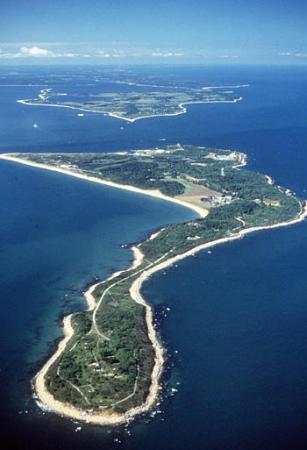
 Artist's rendering of the Kuiper Belt object known as Quaoar, superimposed over a satellite view of North America, contrasting its size. The object measures approximately 800 miles in diameter, compared with the Earth's diameter of approximately 8,000 miles. It is the biggest object found orbitting the sun since astronomers discovered Pluto in 1930. REUTERS
Artist's rendering of the Kuiper Belt object known as Quaoar, superimposed over a satellite view of North America, contrasting its size. The object measures approximately 800 miles in diameter, compared with the Earth's diameter of approximately 8,000 miles. It is the biggest object found orbitting the sun since astronomers discovered Pluto in 1930. REUTERS
